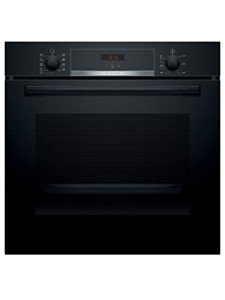The Integrated Oven: A Comprehensive Guide
In contemporary kitchens, the trend towards incorporating appliances with kitchen cabinetry to develop a seamless look has actually gotten substantial traction. Among these essential kitchen tools, the integrated oven stands apart as a favored choice for lots of property owners and cooking enthusiasts. website explores the advantages, functions, and factors to consider associated with integrated ovens, in addition to answering commonly asked questions.
What is an Integrated Oven?
An integrated oven is a kind of built-in oven that is created to be flush with kitchen cabinetry. Unlike freestanding models, which typically stand out by themselves, integrated ovens are concealed or partly hid, providing a smooth and cohesive visual to the kitchen area. These ovens can be found in numerous styles, consisting of single, double, and steam ovens, and can be integrated with racks and cabinets for enhanced storage.
Benefits of Integrated Ovens
Integrating an oven into your kitchen style can offer various advantages. Here are some advantages of selecting an integrated oven:
Space-saving Design:
- Perfect for smaller sized cooking areas, integrated ovens maximize space usage, leaving more space for other appliances or storage.
Visual Appeal:
- The flush installation produces a streamlined, modern-day appearance that can raise the total ambiance of a kitchen.
Customizability:
- Integrated ovens can frequently be customized to match kitchen cabinetry or to include distinct features such as pull-out shelves.
Improved Functionality:
- Many integrated ovens come equipped with innovative cooking innovation, such as wise programs and convection heating, improving cooking results.
Increased Property Value:
- An integrated oven can enhance the value of a home, interesting possible buyers who have an interest in modern-day, well-equipped kitchens.
Picking the Right Integrated Oven
When selecting an integrated oven, numerous factors ought to be considered to make sure that the model fits your cooking requirements and kitchen layout. Below are some essential considerations:
Size and Capacity:
- Check the measurements of your kitchen space. Standard sizes usually range from 60cm to 90cm in width, with capabilities differing based upon how numerous dishes you generally prepare.
Kind of Oven:
- Decide in between standard, convection, and steam ovens. Convection ovens are popular for their even heat distribution, while steam ovens retain moisture for better-flavored dishes.
Features:
- Look for functions that match your cooking style. Some functionalities to consider include:
- Self-cleaning choices
- Smart innovation integration
- Multiple cooking modes
- Security features
Energy Efficiency:
- Opt for energy-efficient models that take in less electrical energy while using high performance.
Budget plan:
- Integrated ovens come in numerous rate ranges. Identify your budget plan while considering the longevity and sturdiness of the device.
| Feature | Suggested Model | Description |
|---|---|---|
| Self-Cleaning Function | Yes | Saves time and effort maintaining cleanliness |
| Convection Cooking | Yes | Enhances heat distribution for even cooking |
| Smart Technology | Optional | Enables control from mobile phones or voice assistant |
| Multiple Cooking Modes | Yes | Adaptability in cooking various dishes |
| Energy Rating | A/A+ | Ensures lower energy consumption |
Installation and Maintenance of Integrated Ovens
Proper setup and maintenance are important for ideal oven performance. Here are some steps to consider:
Installation Steps
- Preparation: Ensure you have all the required tools and products before starting the installation.
- Measure the Custom Space: Confirm the fit of the oven versus the cabinetry.
- Connect to Power Supply: Consult an electrician for safe electrical connections.
- Leveling: Ensure the oven is level to avoid cooking inconsistencies.
- Attach Cabinet Panels: If needed, connect ornamental panels for a tailored appearance.
Maintenance Tips
- Routine Cleaning: Frequent cleaning avoids food accumulation and ensures the oven runs efficiently.
- Examine for Damage: Inspect the door seals and interior for indications of damage frequently.
- Service Regularly: Schedule expert servicing to maintain effectiveness and efficiency levels.
- Follow Operating Instructions: Always follow producer guidelines for operation and maintenance.
Regularly Asked Questions (FAQs)
What is the distinction in between a built-in oven and an integrated oven?
While both types are developed to suit cabinetry, built-in ovens can stick out a little, while integrated ovens sit flush with surrounding cabinets.
Are integrated ovens more costly than traditional ovens?
Typically, integrated ovens can be more pricey due to the style and features that accommodate a seamless build into the kitchen.
Can I replace my existing oven with an integrated oven?
Yes, however make sure to consider the size and any modifications required for your cabinets and kitchen layout.
The length of time do integrated ovens generally last?
With correct maintenance, integrated ovens can last anywhere from 10 to 15 years or longer.
Do integrated ovens need special installation?
Integrated ovens typically require expert installation to ensure they are fitted properly with suitable connections and precaution.
Integrated ovens use an advanced and effective solution for modern kitchen areas, enhancing visual appeal while supplying advanced cooking capabilities. By carefully assessing functions, installation, and upkeep, property owners can pick an integrated oven that best matches their cooking needs and design preferences. With the many designs and types available, anybody can attain a functional space that complements their cooking way of life, making the integrated oven an outstanding investment for any home.

